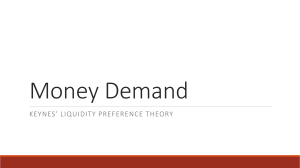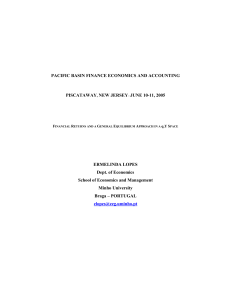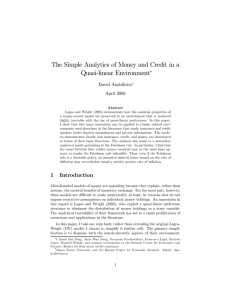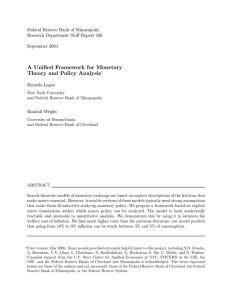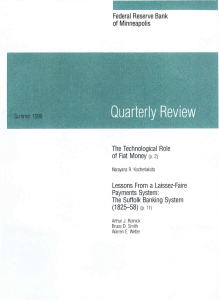Document 13569849
advertisement
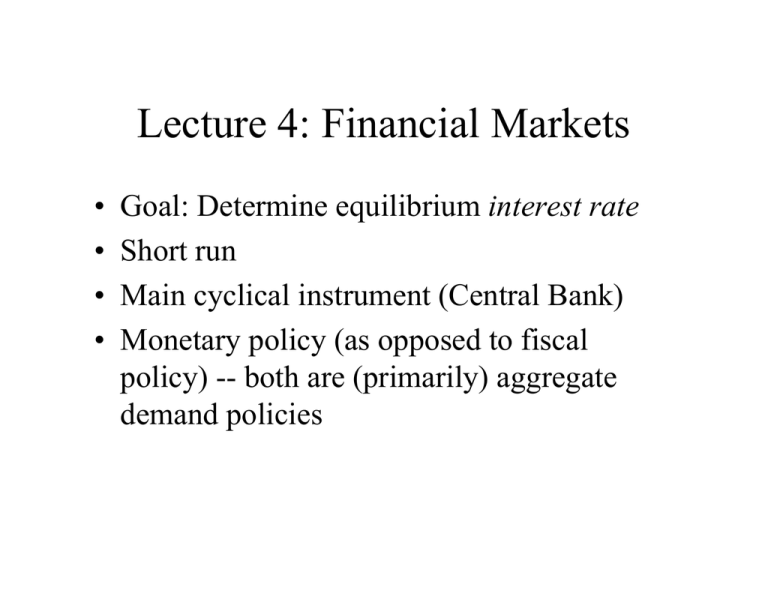
Lecture 4: Financial Markets • Goal: Determine equilibrium interest rate • Short run • Main cyclical instrument (Central Bank) • Monetary policy (as opposed to fiscal policy) -- both are (primarily) aggregate demand policies Financial Assets • Money, bonds, stocks, mutual funds, derivatives… • Reduce to two: –Money: transaction (liquidity) role. –Bond: investment -- pays an interest rate: i • Key question: How much of each? – Tradeoff: transaction services vs return. Money Demand Fix (nominal) wealth at: PWealth M d + Bd = PWealth => determine only one of them d M = P Y L(i) Money Demand Diagram i PY’ > PY M d‘ Md M High U.S. nominal interest rates during late 70s early 80s => sharp decline in M/PY Equilibrium Interest rate • Simple model: – Money supply is constant (i.e. it doesn’t depend on interest rate or P or Y) • Equilibrium: – M = P Y L(i) • Our interest is to determine the interest rate, so we fix P and Y. Equilibrium M i s d’ M d M M Money Monetary Policy M i s M s’ d M M Money Open Market Operation • Central Bank buys bonds in the open market • As a result, price of bonds rises => interest rate falls i = $100 - P P B B Equilibrium in M rather than Central Bank M Ms = H c + θ(1-c) Ms = Md => H 1 = P Y L(i) c + θ(1-c) Examples: a) Y2k ; b) Prudence; c) OMO with multiplier






